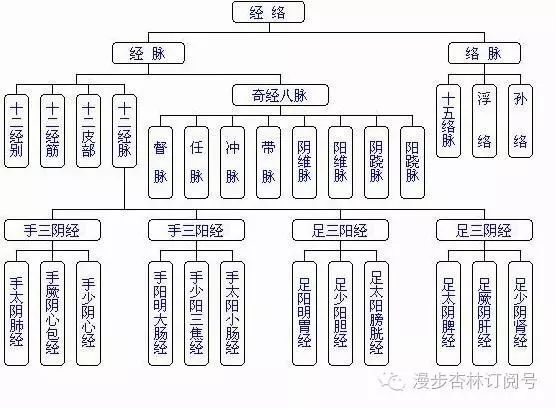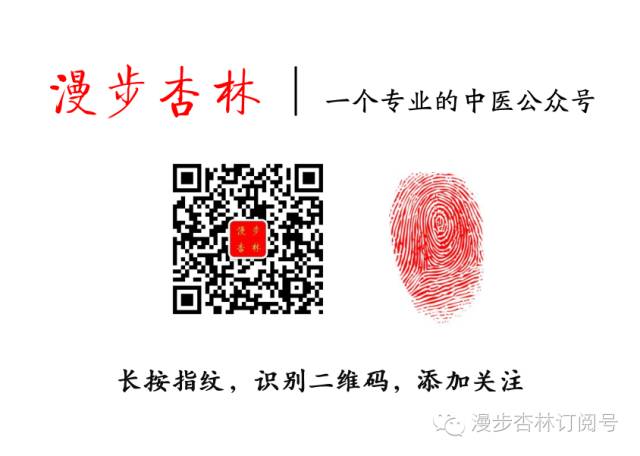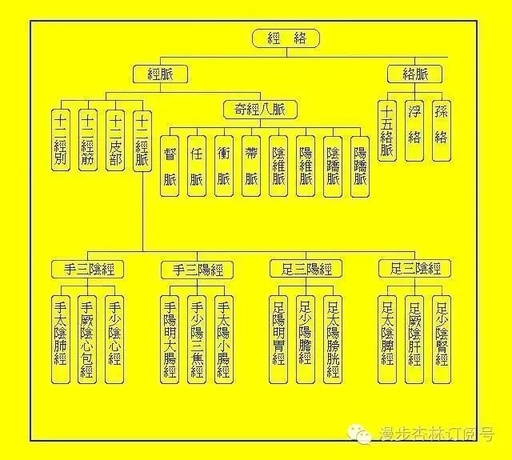(1) Meaning of Luo Vessels
The Luo vessels are branches that diverge from the main meridians, also known as “bie luo”. There are primarily fifteen Luo vessels, which consist of the branches from the twelve primary meridians and the Ren (Conception) and Du (Governing) vessels, as well as the major Luo of the Spleen.
The smaller branches that diverge from the Luo vessels are called “sun luo”. The Luo vessels that are distributed on the surface of the skin are referred to as “fu luo”. The Luo vessels can interconnect with each other, “composite in the skin, their convergence is visible externally” (from the “Ling Shu: Meridians”). The Luo vessels, from large to small, branch into countless fine branches that permeate the body, allowing Qi and blood to nourish various parts and tissues of the body. This transforms the linear flow of Qi and blood in the meridians into a diffuse surface distribution, serving a nourishing function for the whole body.
When a Luo vessel branches from a specific acupuncture point on the main meridian, it is named after the point from which it diverges. For example, the Luo vessel of the Hand Taiyin meridian diverges from the Lieque point, thus this Luo point is named “Lieque”.
(2) Pathways of Luo Vessels
Among the fifteen Luo vessels, the Luo vessels of the twelve primary meridians all diverge from below the elbows and knees, connecting between the Yin and Yang meridians that are interrelated, either moving from Yang to Yin or from Yin to Yang, serving as a link for the twelve meridians in the limbs.
The Luo vessels of the Ren meridian are distributed in the abdomen, connecting with the Chong meridian; the Luo vessels of the Du meridian are distributed in the back, diverging from the Taiyang meridian and also connecting with the Ren meridian and the Foot Shaoyin meridian; the major Luo of the Spleen is distributed in the lateral side of the body, overseeing the connections of all Yin and Yang Luo vessels. These three play a connecting role in the trunk, thereby enhancing the unified connection of the front, back, and sides of the body.
1. Hand Taiyin Luo Vessel
Luo Name: Lieque.
Location: 1.5 inches behind the wrist.
Neighboring Meridian: Diverges to the Hand Yangming meridian.
Pathway: Diverges from the Lieque point, starts above the wrist joint, connects with the Hand Taiyin meridian, and disperses in the thenar region.
2. Hand Shaoyin Luo Vessel
Luo Name: Tongli.
Location: 1 inch behind the wrist.
Neighboring Meridian: Diverges to the Hand Taiyang meridian.
Pathway: Diverges from the Tongli point, ascends along the meridian to the heart, connects upward to the root of the tongue, and belongs to the eye system.
3. Hand Jueyin Luo Vessel
Luo Name: Neiguan.
Location: 2 inches behind the wrist.
Neighboring Meridian: Connects with the Hand Shaoyang meridian.
Pathway: Diverges from the Neiguan point, emerges between the two tendons, ascends along the meridian to connect with the pericardium, and links with the heart system.
4. Hand Yangming Luo Vessel
Luo Name: Pianli.
Location: 3 inches behind the wrist.
Neighboring Meridian: Diverges from the Hand Taiyin meridian.
Pathway: Diverges from the Pianli point, diverges from the Hand Taiyin, its branch ascends along the arm to the shoulder, disperses on the cheek, connects with the teeth, and branches into the ear to join the main meridian (referring to the primary meridian).
5. Hand Taiyang Luo Vessel
Luo Name: Zhizheng.
Location: 5 inches behind the wrist.
Neighboring Meridian: Internally connects with the Hand Shaoyin meridian.
Pathway: Diverges from the Zhizheng point, ascends to the elbow, and connects with the shoulder region.
6. Hand Shaoyang Luo Vessel
Luo Name: Waiguan.
Location: 2 inches behind the wrist.
Neighboring Meridian: Connects with the Heart Master (Jueyin).
Pathway: Diverges from the Waiguan point, circulates around the outer side of the arm, enters the chest, and meets with the Jueyin meridian.
7. Foot Yangming Luo Vessel
Luo Name: Fenglong.
Location: 8 inches above the outer ankle.
Neighboring Meridian: Diverges to the Foot Taiyin meridian.
Pathway: Diverges from the Fenglong point, moves towards the Taiyin, its branch ascends along the outer side of the tibia, connects at the top of the head, and disperses to the throat and pharynx.
8. Foot Taiyang Luo Vessel
Luo Name: Feiyang.
Location: 7 inches above the outer ankle.
Neighboring Meridian: Diverges to the Foot Shaoyin meridian.
Pathway: Diverges from the Feiyang point, moves towards the Foot Shaoyin meridian.
9. Foot Shaoyang Luo Vessel
Luo Name: Guangming.
Location: 5 inches above the outer ankle.
Neighboring Meridian: Diverges to the Foot Jueyin meridian.
Pathway: Diverges from the Guangming point, moves towards the Foot Jueyin, and connects downward to the dorsum of the foot.
10. Foot Taiyin Luo Vessel
Luo Name: Gongsun.
Location: 1 inch behind the first metatarsophalangeal joint.
Neighboring Meridian: Diverges to the Foot Yangming meridian.
Pathway: Diverges from the Gongsun point, moves towards the Foot Yangming meridian, its branch enters the abdominal cavity, connecting with the intestines and stomach.
11. Foot Shaoyin Luo Vessel
Luo Name: Dazhong.
Location: Below the inner ankle.
Neighboring Meridian: Diverges to the Foot Taiyang meridian.
Pathway: Diverges from the Dazhong point, moves towards the Foot Taiyang meridian. Its branch parallels the main meridian, ascends to below the pericardium, and externally connects with the lumbar spine.
12. Foot Jueyin Luo Vessel
Luo Name: Ligou.
Location: 5 inches above the inner ankle.
Neighboring Meridian: Diverges to the Foot Shaoyang meridian.
Pathway: Diverges from the Ligou point, moves towards the Foot Shaoyang meridian. Its branch passes through the tibia, ascends to the testicles, and converges at the penis.
13. Luo of the Ren Meridian
Luo Name: Jiutai.
Location: Below the xiphoid process of the sternum.
Neighboring Meridian: Du meridian.
Pathway: Diverges from the Jiutai point, descends from the xiphoid process, and disperses in the abdomen.
14. Luo of the Du Meridian
Luo Name: Changqiang.
Location: 0.5 inches below the tip of the coccyx.
Neighboring Meridian: Diverges to the Foot Taiyang meridian.
Pathway: Diverges from the Changqiang point, runs alongside the spine, ascends to the neck, and disperses on the head. The descending Luo vessels begin at the scapula, diverging to the left and right to the Foot Taiyang meridian, entering the muscles beside the spine.
15. Major Luo of the Spleen
Luo Name: Dabao.
Location: 3 inches below the armpit.
Neighboring Meridian: Connects with the blood of the whole body.
Pathway: Diverges from the Dabao point, 3 inches below the armpit, and the pulse energy disperses in the chest and lateral sides.
(3) Physiological Functions of Luo Vessels
They serve as a link between the Yin and Yang meridians, participating in the overall circulation of the twelve meridians. The pathological characteristics reflected by the fifteen Luo vessels primarily focus on ailments of the limbs and surface of the body, often being localized conditions, unlike the deeper and more complex pathologies of the twelve meridians.


↓↓↓ Scan to follow “Manbu Xinglin“, to gain more knowledge about Traditional Chinese Medicine


